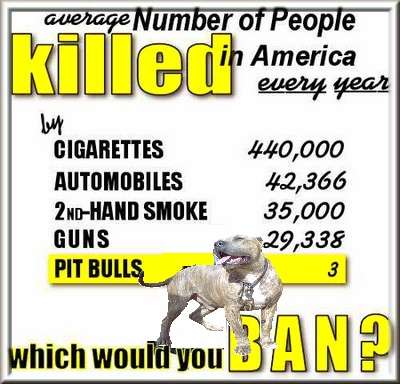|
Dangerous Dogs
Dangerous
Dogs are defined by their actions, not by their specific breed.
If you own a dangerous
dog, there are certain steps which you must take by law, under the Domestic (Feral and Nuisance) Animal Act 1994. If you do
not fulfil your legal responsibilities regarding your dangerous dog, you face very severe penalties.
Your neighbours and the wider community also have the right to know if they are in the vicinity of a dangerous
dog. |
|

|
By fully complying with the
legislation, the community is protected, and you provide a clear indication that people should not approach your dog.

What Is A Dangerous Dog?
A dog is declared as dangerous by a Local Council if it has attacked a person or animal without provocation and
caused serious injury.
Particular breeds of dogs are not classified as dangerous, however if
a dog is trained to attack people or animals, or is kept as a guard dog on non-residential premises, it will also be deemed
dangerous.

How to Identify a Dangerous Dog
All dangerous dogs are required by law to wear a prescribed striped reflective red and yellow collar and their
presence indicated by signs at all entrances to where it lives or works. Your Council can inform you where to purchase these
items.
In addition, all dangerous dogs must be permanently identified by a microchip implanted
under the dog's skin. Most vets can arrange microchipping and your local Council must be supplied with the microchip number
for their records.
By fulfilling your legal responsibilities with respect to properly identifying
your dog as dangerous and displaying the required signage on the property where the dog lives, you give yourself legal protection
in the event that a person enters the property and is attacked.

What To Do If Approached By A Dangerous Dog
There are some important rules to remember if approached by a dangerous dog:
- Don't run away - stand completely still
- Don't kick at the dog, squeal or jump
- Avoid eye contact with the dog - a dangerous dog might interpret direct eye contact as
a challenge
|
- Keep your hands firmly by your sides and don't wave them around
- Try shouting at the dog to 'sit' or 'stay' - this asserts dominance. However, if
the dog does not respond to this, do not challenge it again
- Slowly back away from the dog, and when there is enough distance between you and the dog,
walk away.
|
There is a good chance that after adopting these tactics, the dog is likely to come
up and sniff you, nudge you with its nose and leave you alone.

What you are required to do if you own a dangerous
dog
If you commence training a
dog for attack purposes, you must advise your local council. If you own a dog that has been declared dangerous and move to
a new council area, you must notify that council.
You must also notify the council if your
dog is missing or if ownership of the dog changes.

Security precautions that you are required to take
at home
In addition to displaying warning signs on all entrances to the premises, a dangerous
dog must also be kept indoors or in a childproof enclosure from which the dog cannot escape.
Outdoor
enclosures must be:
- Fully enclosed
- Weatherproof
- Constructed of brick, timber, iron or mesh, of a minimum size as specified by law.
The gate must be locked when the dog is inside the enclosure. |

Housing of Dangerous dogs
guarding non-residential premises.
When a dangerous dog is guarding non-residential premises,
the perimeter fencing must be escape proof and comply with prescribed specifications. When the dog is not guarding, it must
be housed in an enclosure similar to the one described above.

Security precautions required
if you take a dangerous dog into a public place
It is a legal requirement that a dangerous
dog must be muzzled to prevent biting and be controlled effectively by means of a chain, cord or leash whenever out in public.

The legal consequences if your dog injures someone
If a dog rushes, attacks or worries a person or animal, the owner may be prosecuted. The owner will also be liable
for any damage the dog may have caused. A Magistrates Court can order the dog to be destroyed if the owner is convicted of
such an offence.
It is also worth noting that if your dog currently
demonstrates aggressive behaviour such as chasing, rushing or biting people or animals, you could be found liable for its
actions and your dog declared as dangerous and/or destroyed. You could also be fined up to $1000 for a first offence, or $12,000
or 6 months imprisonment for an offence involving a declared dangerous dog.
Contact your local
Council or the Bureau of Animal Welfare for a brochure outlining the legal
responsibilities for the owner of a dangerous dog in more detail. |
|
|







